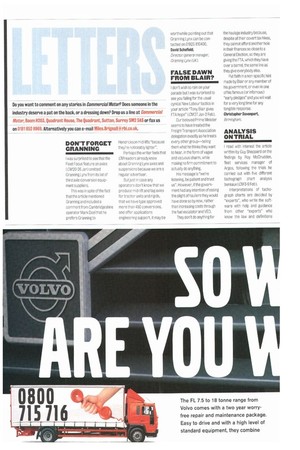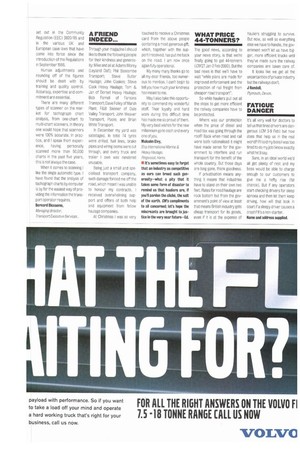ANALYSIS ON TRIAL
Page 28

Page 29

If you've noticed an error in this article please click here to report it so we can fix it.
I read with interest the article written by Guy Sheppard on the findings by Roy McCrudden, fleet services manager of Argos, following the trials he carried out with five different tachograph chart analysis bureaux ( CM3-9 Feb).
Interpretations of tachograph charts are decided by "experts", who write the software with help and guidance from other "experts" who know the law and definitions
set out in the Community Regulation (EEC) 3820/85 and in the various UK and European case laws that have come into force since the introduction of the Regulations in September 1986.
Human adjustments and rounding off of the figures should be dealt with by training and quality control. Accuracy, expertise and commitment are essential.
There are many different types of scanner on the market for tachograph chart analysis, from one-chart to multi-chart scanners. In theory one would hope that scanners were 100% accurate. In practice, and I speak from experi ence, having personally scanned more than 50,000 charts in the past five years, this is not always the case.
When it comes to scanning I like the single automatic type. I have found that the analysis of tachograph charts by computer is by far the easiest way of providing the information the transport operator requires. Bernard BIN:me,
Managing director.
Transport Executive Services .












































































































